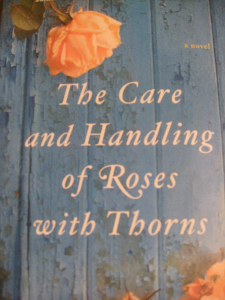Erika Robuck's Blog, page 21
September 12, 2012
Interview: Sophie Perinot
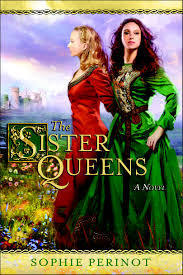
I reviewed Sophie Perinot’s fascinating historical saga THE SISTER QUEENS in March, and now she is kind enough to answer my Muse questions for readers and writers. If you are a fan of family drama and smart, sweeping historicals, you will love THE SISTER QUEENS. You will also enjoy her answers to my queries.
1. What inspired you to write THE SISTER QUEENS?
A footnote. Several years ago, while researching a different project, I came upon a footnote in a history of Notre Dame de Paris about Marguerite of Provence (whose kneeling image is carved over that great church’s Portal Rouge) and her sisters. These remarkable 13th century women (daughters of the Count of Provence and related, through their mother, to the powerful house of Savoy) all made politically significant marriages (with the eldest two becoming the queens of France and England) yet I had never heard of them. I wondered how they could have slipped through the fingers of history. The fact that they had seemed utterly unfair. So I started a file folder with their names on it, vowing to come back and tell their story. The Sister Queens fulfills that vow.
Once I’d committed to the characters at the center of my novel, the manner in which I chose to frame my story—as a tale of sisters rather of political events—was inspired by my personal life. I am half of a pair of incredibly close sisters. My sister and I were college roommates and we still speak nearly everyday by phone. I get tired of books that portray sisters as back-stabbing, hyper competitive rivals. That is NOT my experience of sisterhood. I believe lots of sisters draw tremendous strength from each other and stand together to face life’s challenges. It’s that sisterly support that I wanted to celebrate in my book, both to honor of my own sister and because I believe it will resonate with sisters everywhere.
2. What is your favorite part of the writing process?
The moment when my characters come to life and begin to speak and act for themselves almost without my volition. After that “genesis moment” they can be disruptive—starting conversations when I am showering, weaving scenes I am desperate not to miss when I am driving, saying and doing things that don’t follow my plot outline—but it is still so much better than trying to coax them into action.
3. What part of the process is not your favorite?
The most difficult part of the writing process for me is NOT comparing how I work to how any of my (very talented) writer friends work. I happen to be a slow first drafter, and I tend to write scenes as they come to me rather than in chronological order. I have friends who work in a very linear manner and others who can turn out a draft in a month or two. If I start thinking about that I’ll end up curled in a fetal position under my desk with whatever chocolate was handy. That’s no good. I have to write my books my way or they won’t get written at all. That means listening to friends’ writing stories without obsessing over their writing processes.
4. If you could go back in time, what advice would you give your debut author self before the launch of THE SISTER QUEENS?
“Finish a draft of the next book BEFORE your launch, stupid!”
Seriously, I’d been warned by veteran author friends that I would write little or not at during the 6-8 weeks surrounding my launch but I was incredulous. I couldn’t imagine promotion would take more than an hour or two a day (cough). Nor could I foresee that when I wasn’t promoting my brain would be like an over-excited, sugared-up toddler with the attention span of a gnat. So I’d go back, shake my pre-debut self and tell her to get busy on the wip during the pre-publication period. Hard though it is to believe, it is easier to work on your wip while you are doing rewrites for your editor, reviewing copy edits and reading page proofs than it will be in the 2-3 months after launch. Set weekly writing goals during your run up to launch and make yourself meet them. Then, about a week before your launch, surrender yourself fully to your “world domination blog tour,” author appearances, and (of course) to obsessively checking your Amazon rankings.
5. What is your favorite novel of all time?
I do not have a favorite novel of all time.
I believe different novels serve different needs in our lives. Personally there are about 200 books from my reading-past that I consider “must owns”. When I bought my first house I assembled a library containing these personal selections so they would always be within reach and so that my children would be exposed to them as they grew up. Some of the novels are comfort food—guaranteed to divert me whatever my stress or circumstances. Austen’s Pride and Prejudice (which I re-read religiously during every exam week of my academic career) falls in this category. Others novels in my collection were “formative”—they changed who I became, how I viewed life, or how I viewed literature—and I can still rely on them to remind me of important truths. Tolstoy’s Anna Karenina is such a book. I’ve re-read it in every decade of my life since my teens.
6. What is your first memory of writing?
I can’t remember NOT making up stories. I am not sure whether it was my FIRST foray into writing fiction, but I have distinct memories of creating an illustrated picture book called Mustard Cream Pie in which a momentarily unattended toddler “helps” his mother finish her banana cream pie by adding mustard from a jar his brother left on the counter after making a bologna sandwich. Riveting, I know! I still have this literary gem  I found it while helping my parents to move out of my childhood home and it is now on the bookshelf in my family room.
I found it while helping my parents to move out of my childhood home and it is now on the bookshelf in my family room.
7. What do you most want readers to take away from THE SISTER QUEENS?
What a reader ultimately takes away from my book will depend on what she/he brings to it. I think the very best books allow us to approach issues in our own lives from the comfortable distance of a fictional setting.
The Sister Queens is a sister story first and foremost. Yes, it is set in the 13th century and the atmosphere, politics and history are richly detailed and appropriate to that time period but the book focuses on that which is timeless—the way our sisters shape us whether by challenging us or by supporting us. So I suspect many readers will use the book as a catalyst to reflect on the sister issue in their own lives. But there are a number of other themes/questions raised by the book. For example: are all long-term romantic relationship doomed to a period of stagnation; how do couples work past that; does society place too much value on professional competence in judging a man and too little on competence as a husband or father? I don’t want to answer those questions (or any questions raised by my novel) for readers. I want to leave them free to draw their own conclusions informed by their life experiences.
Thanks so much, Sophie!
For more on Sophie and her work, visit her website at http://www.sophieperinot.com/.


September 4, 2012
It’s Pub Day!!!
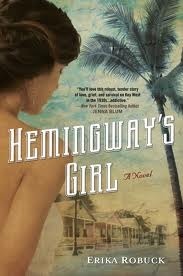
Today Hemingway’s Girl was officially released into the world. There are no words to properly express how grateful I am to my family and friends in life and online who have supported me throughout this process. I am blessed.
In the coming weeks I will post many links to reviews and visits on other blogs, but tonight I want to leave you with this post which summarizes what I’m most thankful for today.
Thank you for all you’ve done to help me along this journey. I am honored, humbled, and delighted.
http://www.greatthoughts.com/2012/09/what-im-most-thankful-for-on-pub-day/.html
August 24, 2012
Interview: Nancy Bilyeau

I read and LOVED Nancy Bilyeau’s historical suspense novel, THE CROWN, and reviewed it back in January. It was also a finalist for the Ellis Peters Historical Dagger Award from the Crime Writers Association in the UK.
Nancy’s novel is coming out in paperback, and she was kind enough to answer some questions for her readers (and fellow writers) while she’s hard at work on the sequel. I hope you enjoy this interview, and if you love thrilling, atmospheric, historical novels, you must read THE CROWN.
1. What inspired you to write THE CROWN?
I’ve always loved English history, reading biographies and novels set there. My favorite century is the 16th, so when I started to think about writing a novel, I thought, “Put your book in the time you find most interesting.” My protagonist is a young Catholic novice because I wanted to write about a pursuit that does not often get attention in fiction. I didn’t know anything about nuns, and had to do a lot of research.
2. What is your favorite part of the writing process?
When inspiration strikes, and my fingers fly across the keyboard.
3. What part of the process is not your favorite?
When inspiration does not strike, and every sentence seems bad. It’s scary, and I have to push myself to keep going, to know that I can revise and revise.
4. If you could go back in time, what advice would you give your debut author self before the launch of THE CROWN?
Try to enjoy it as much as you can, and don’t get caught up in the business of publishing any more than you have to,
5. What is your favorite novel of all time?
That is such a hard decision! I guess I would have to say “The Great Gatsby,” because it is so lovely and every time I read it I discover something else. Runners-up: “Anna Karenina”, “The Age of Innocence,” and “Rebecca”.
I have to tell you that in college I started reading Hemingway and had a pretty strong reaction to his books. It’s difficult to rank my “favorite” Hemingways. I would have to say “The Sun Also Rises” and “The Snows of Kiliminjaro.” I re-read “A Farewell to Arms” while writing my second novel, “The Chalice,” and was humbled by Hemingway’s descriptive power and use of point of view. But I wanted to jump into the book and say to Catherine Barkley, “Run, don’t walk! He’s not the soldier for you.” Ha.
6. What is your first memory of writing?
The first memory I have of feeling good about writing is when my third grade class went on a field trip, and the teacher said she liked my report afterward, she said she liked the way I wrote about the leaves on the trees.
7. What do you most want readers to take away from THE CROWN?
The feeling that they were part of the 16th century for a time, and saw it through the eyes of someone pretty special.
Nancy, thank you so much for these answers. I think we are reading soul-sisters. I wish you all the best with your paperback launch!
For more on Nancy and her fabulous novel, visit her website at : http://www.nancybilyeau.com/


August 20, 2012
Suicide and Redemption

Photo courtesy of tousledmind @deviantart.com
In light of the tragic death of director Tony Scott, I wanted to bring up the issue that no one wants to talk about, and my connection to it in my life and in my work. It is my hope that those in the midst of dark or harrowing times will reach out to their loved ones in person instead of by a note that will not reach them until it’s too late.
Suicide runs like a knotty vine through my family tree, as it does for many others, I suspect. Even the word ‘suicide’ is a secret, ugly word, shadowed with shame, blame, guilt, and regret. Missed opportunities, pain over harsh words, fear that those who committed the act will never, ever rest from it. Fear that those left have a piece of that in them—a piece of whatever impulse of outrageous courage or cowardice it was that prompted the others to do it.
Because of the suicides of numerous family members and friends, I have long been drawn to artists who have committed suicide, both in fiction and in life. From characters like Edna Pontellier in Kate Chopin’s, “The Awakening,” to Virginia Woolf. From Sylvia Plath to Anne Sexton. From Kurt Cobain to Ernest Hemingway.
Several years ago, I visited Hemingway’s home in Key West. I’ve loved Hemingway’s work since college, and visiting the house seemed to cement my connection to him. When I got home, I knew I wanted to write about Hemingway at that place in his time not only because it held a high degree of historical value, but because I wanted to redeem him.
Ernest Hemingway had a well known nasty streak, but not many people know about his other side. While researching my novel, I was given permission to visit the Hemingway archive at the JFKMuseum in Boston, where over ninety percent of Hemingway’s papers, letters, manuscripts, and photographs reside. It was while reading his letters and flipping through his photographs that I saw a side of Hemingway that moved me deeply.
From the meat-head known for knocking out weaker men in bar fights, came tender words of consolation to dear friends who had lost their son. From the writer known to slam his peers through vitriolic commentary and thinly disguised fictionalizations, came a man who let a homeless young wanderer into his home and his life for a year to instruct him on fishing and writing. From the prolific husband and notorious womanizer, came A MOVEABLE FEAST, which feels, in large part, like a long letter of apology and regret to his first wife and his young self.
Sadly though, I could hardly enjoy reading about the good times in his life with his end looming. When someone commits suicide there is a natural tendency to view every moment of the life through the filter of the death. For some, suicide is the culmination of a lifetime of terrible lows, for others, a seemingly inexplicable impulse. Whether it is appropriate or not, every harsh word, every tear, even the happy times seem somehow connected to the final act.
In Hemingway’s works and letters, one can’t help but think of his life in terms of his suicide since he not only talked about his intention of doing it throughout the years, but also because of how many of his family members had died by their own hands. In the present day, Hemingway would have probably been diagnosed with bipolar disorder and given antidepressants. In his time he was given electroshock therapy that damaged his mind, broke his spirit, and left him unable to write.
While spending so much time learning about Hemingway’s death and the suicides of his father, sister, and brother, among others, I was forced to spend a lot of time thinking about my own family members and friends. A boy who had shot himself in high school for not getting into the Naval Academy. A father who had taped the windows and doors of his New York City apartment bathroom and opened the gas line while his five kids played in the living room. An uncle who got drunk after several years of sobriety and drove his car into a parked vehicle at a dizzying speed. They came back to me, and I did not welcome them.
Gradually, though, I found that while I wrote, while I thought of them, my writing became a prayer for them. It was an acknowledgment of their lives and deaths, and hope for their peace after death.
My novel is not about suicide. It is about persistence and living life well, even in the face of temptation and tragedy. It is my hope that within the words there is a release, a remembrance without judgment, and a redemption.
* * *
If you or someone you love is experiencing suicidal thoughts or depression, please don’t wait to reach out for help. There are so many resources out there. One of particular poignancy is that of Ernest Hemingway’s granddaughter, Mariel Hemingway. Her foundation is called You Matter, Don’t Quit. For more about it, please visit the Facebook page.


August 7, 2012
Book Review: The Reckoning
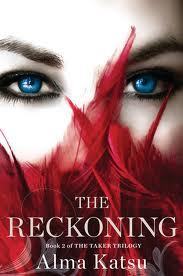
“I was squinting at a painting through the dimness…when I felt a hum in the back of my head. At first, I thought it was only a headache from the excitement of the day…except I never got headaches…It was only then that I understood that it was a signal, like the electric current that switches on a machine. I had been contacted, and a dread I’d carried for two centuries bloomed inside me, firing through every cell in my body. I could try to run from the past, but it seemed the past was not done with me yet.”
Alma Katsu, The Reckoning
The Reckoning, by Alma Katsu, was published in June and is 343 pages. I bought the book from One More Page Books in Arlington, VA and won a copy in a Goodreads giveaway, so I will give away one copy to commenters on this post (US residents only, please.) It is Book Two of The Taker Trilogy.
The Reckoning is the story of immortal Lanore McIlvrae who has imprisoned her evil “maker” Adair in a brick wall, and has spent the last two centuries trying to atone for the sins of her mortal and immortal lives. She is looking to the future with the doctor, Luke Findley, who helped her in the first novel in the trilogy, The Taker. As she views items from her past that she has presented for an exhibit at a London museum, she feels a humming in her head warning her that Adair has escaped his prison and that he will hunt for her. Suddenly on the run after two hundred years, Lanore must seek out those like her to search for a way to destroy the indestructible Adair. From her present dreams, to memories from her past, and spanning the globe, Lanore travels great distances to protect the man she loves and herself.
As Lanore searches, so does Adair. As he struggles to acclimate himself to life in the present and find the best way to exact his crushing revenge on Lanore, he is increasingly agitated by feelings of fear, weakness, and even love for her, though his demonic nature continues to assert itself. When he finds her, will he unleash his fury, or will he make her see the depth of his feeling for her?
Set in multiple time periods and featuring unforgettable characters like Lord Byron, The Reckoning is a fascinating, page turning, thrilling novel that has every bit as much power as the first book in the series. Katsu manages to create highly unique and diverse characters as rich and layered as the times from which they come. She even makes a devil like Adair somehow sympathetic, which is a mark of genius.
Katsu is a master of suspense and surprise. Just when the reader thinks she knows what will happen, the pages take a turn one cannot predict or anticipate. I gasped out loud several times in the reading and groaned when I finished the book knowing I would have to wait for the final book in the trilogy. I can’t wait to see how this trilogy ends.
I have one hardcover version of The Taker to give away to someone who comments on this blog post. If you’ve read The Taker (which I recommend before reading The Reckoning) or are simply interested in starting the series, I’d love to hear from you. I have one note of caution: these books are extremely graphic and violent, often in sexual ways. Fans of True Blood will enjoy the series, but if you don’t like rated “R” or “NC-17″ movies, you should not enter this contest. Please comment by Wednesday, August 15th, and good luck!


August 4, 2012
Book Review: The Care and Handling of Roses with Thorns
“Difficult and obstinate. Thriving under a set of specific and limited conditions. That pretty much describes me. Maybe that’s why I like these roses so much.”
Margaret Dilloway, The Care and Handling of Roses with Thorns
The Care and Handling of Roses with Thorns, by Margaret Dilloway, was published on August 2 and is 368 pages. I read and loved her first novel, How to Be an American Housewife, and went on a writing retreat with Margaret last year. Her publisher sent me an early reader copy of the novel.
The Care and Handling of Roses with Thorns is about feisty, thirty-six-year-old Galilee Garner, a science teacher and rose breeder with kidney disease who is suddenly left to care for her teenage niece, Riley, when her delinquent sister takes a job overseas. For a woman who would rather rub aphids off rose leaves, inheriting a girl with social issues while dealing with dialysis every other night does not exactly excite her. Troubles at her job with her principal and also with her best friend, the art teacher, exacerbate Gal’s wish to hide away in her greenhouse and never come out. As Gal and her niece begin to bond over roses, Gal’s health and other relationships start to fail, and it takes losing almost everything for Gal to realize how blessed she truly is.
Gal Garner is an original and endearing character. Her stubbornness and wit in the face of her life’s adversity make for amusing commentary, and she almost never feels sorry for herself. Her honesty is both shocking and refreshing, and readers will pull for her from the first chapter. The way that Dilloway weaves in her extraordinary knowledge of growing and breeding roses as a metaphor for her thorny characters and relationships is brilliant, and her character development is smooth and believable. Readers should prepare to cry while reading this book, but not from anything predictable or sentimental, only the exquisite beauty of humanity illustrated by a sure and capable hand.
The Care and Handling of Roses with Thorns is one of my favorite books of 2012. If you enjoy stories of hope, healing, and family, I strongly encourage you to read this novel. I give it my highest recommendation.


August 2, 2012
Review: THE UNFINISHED WORK OF ELIZABETH D

“Kate sat quietly on the deck amid the noise. The sense of the missing member of the party was a fog low over the patio, changing the look and feel of everything.”
Nichole Bernier, THE UNFINISHED WORK OF ELIZABETH D.
The Unfinished Work of Elizabeth D., by Nichole Bernier, was published in June and is 320 pages. Nichole is a contributor to the blog Beyond the Margins. I first “met” Nichole on Twitter and then in person at a local signing, where I bought the book.
Set during the summer after the September 11th attacks and in the past by way of a set of journals bequeathed to a woman by her friend, The Unfinished Work of Elizabeth D. is a story about how much we keep from others and the cost of our secrets.
The novel begins as Kate and her family drive to the home of Dave Martin, the widower of her friend Elizabeth who has recently died in a plane crash. To everyone’s confusion, Elizabeth has left her precious journals she has kept over her entire life to Kate, and said that Kate would know what to do with them. The trouble is Kate hasn’t seen her friend much since she moved to Washington DC, and doesn’t feel she has had an intimate enough relationship with Elizabeth to deserve such a special part of her. Dave is not pleased with Kate taking the journals, and he’s hurt that his wife didn’t trust him enough to leave the journals to him, but Kate takes the trunk of Elizabeth’s writings with her on vacation to Great Rock Island.
As her family settles into beach life around her and her husband works remotely from the island, Kate becomes absorbed by the journals that reveal more secrets about her friend than she was prepared to read. Every new revelation raises more and more questions, and the effect of Elizabeth’s writing on her friend is profound. Kate starts questioning her own role in her family as she learns about Elizabeth’s, and her own marriage and family life begin to show signs of strain. Even after she closes the last page of the last journal in her possession, Kate still struggles to find the meaning of her inheritance and her own purpose.
Bernier’s gift for presenting family life and tension is matched by the perfect pacing of the novel, and the journal entries of Elizabeth are woven throughout with precision and skill. Kate’s awakening occurs as Elizabeth questions her own life. Their struggles are those of the modern woman trying to find balance in her work and in her family life, and Bernier handles the issue with grace, honesty, and authenticity.
The most beautiful aspect of the book is the way Kate opens up with each passing chapter. As she learns of Elizabeth’s secret desire to exhibit her artwork or to be remembered by her talents, Kate herself becomes one of Elizabeth’s projects. Kate’s reading of the journals becomes a conversation between two friends who didn’t have the opportunity or courage to share so intimately when both of them were alive. The novel shows the ability of love to continue to exist even after our loved ones have gone.
Fans of J. Courtney Sullivan will love The Unfinished Work of Elizabeth D. It is a powerful debut by a gifted author, and I can’t wait for more.
July 31, 2012
Book Review: Stoner
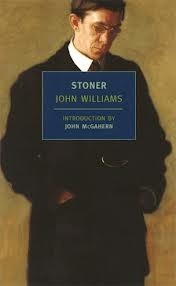
“Sometimes, in the evenings, he wandered in the long open quadrangle, among couples who strolled together and murmured softly; though he did not know any of them, and though he did not speak to them, he felt a kinship with them. Sometimes he stood in the center of the quad, looking at the five huge columns in front of Jesse Hall that thrust upward into the night out of the cool grass… [g]rayish silver in the moonlight, bare and pure, they seemed to him to represent the way of life he had embraced, as a temple represents a god.”
John Williams, STONER
STONER by John Williams was published in 1965 and is 288 pages. I heard about the novel from literary agent Jonny Geller on Twitter. He asked for recommendations of outstanding books that receive little attention, and he put STONER on the list. After completing the novel I’d never before heard of in just three nights, I would have to agree with Mr. Geller.
STONER is the life story of William Stoner, the son of poor Missouri farmers at the turn of the century. His father wishes to send William to the state university to study agronomy to improve their farm, but instead, William finds his true calling in English literature and his place in the sturdy, reliable structure of the university. As he passes the years at the school, the death of his friend in the war, the dwindling light of his favorite professor, and his ill-fated marriage to a frigid and unstable socialite set the course of his future. As he pursues a graduate degree, and eventually becomes a professor at the university, Stoner encounters the terrible unfairness of the world in his work and in his personal life, though his dignity is never compromised.
Stoner is a sympathetic character of the highest quality. His tenderness and humility unite him to the reader, and his quiet strength is admirable, though often painful to encounter. The novel builds in intensity and it has a lingering sadness, and the contrast of such a sturdy, principled gentleman to today’s “typical American” is stark and profound.
As a character study and work of humanism, STONER is an outstanding novel. Don’t let the idea of a quiet character keep you from this book. William demonstrates more passion, intelligence, and genuine love than any character I’ve read in recent memory. STONER begs to be discussed, and would make an excellent book club selection. I give it my highest recommendation.


July 23, 2012
Book Trailer: Hemingway’s Girl
I am so thrilled to share the book trailer for my new novel, HEMINGWAY’S GIRL, with you. It was filmed “on location” in Key West by the very talented husband and wife team, David and Kathryn Seay of David Seay Productions. The novel comes out on September 4th.
I hope you enjoy it!



July 17, 2012
Review: SHINE SHINE SHINE
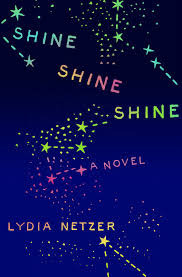
“She had envisioned rejection, renouncing, she had envisioned being drummed out of the neighborhood, her cardigans cut to rags, her minivan repossessed, but she had not anticipated that what might happen was that they would sort of kind of identify with her. That this, the baldness, would make her more like them, not less.”
Lydia Netzer, SHINE SHINE SHINE
SHINE SHINE SHINE by Lydia Netzer is 320 pages and today is the pub date. Lydia invited me to join a writer’s (support) group on Facebook called Book Pregnant, and my chums there have saved my sanity on more than one occasion. Her publisher sent me an advanced reader copy of her book, which thrilled me, though I didn’t think I’d review it here because it isn’t historical fiction. It turned out to be one of the best books I’ve read all year, so I had to share it with you.
SHINE SHINE SHINE is the story of a congenitally bald, suburban mom hiding under wigs, her autistic son, Bubber, and her rocket scientist husband who has gone to space to work on colonizing the moon.
Seriously.
If you’re wondering how I came to read such a book when my obsession clearly lies in history, I can tell you that serendipity (and a shared love of the band Carbon Leaf) brought Lydia and I together, and that is how a book like this landed in my hands. I can also tell you that SHINE SHINE SHINE blew my mind, and has opened up all kinds of new reading horizons for me. But back to the story…
Sunny, the bald housewife, has been crafting “the perfect life” with the precision of a surgeon since she found out she was pregnant with her son. She has taken to wearing wigs, baking, moving into the best neighborhood, and becoming the ultimate “super mom,” until one day, a car accident causes her wig to fly out the window, and knocks her entire scripted life out of orbit.
From that moment, Sunny’s world begins to fall apart and she alone must rebuild it. Her relationships with her son, her dying mother, her unusual husband, her community, and her self will be tested in ways she never imagined. She must re-learn how to live the life she was meant for in spite of the consequences.
Remarkable, touching, heartbreaking, shocking, and unique beyond anything I’ve ever read, SHINE SHINE SHINE will capture readers passionate about all genres simply because it is so beautiful, challenging, and original. Do yourself a favor and buy this book today, right now. You’ll thank me. Then come back and tell me what you thought.





